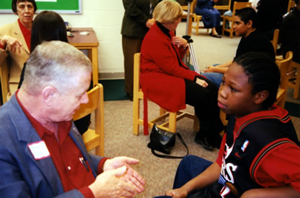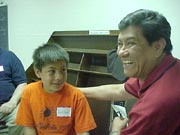HOW TO DO ORAL HISTORY

© Judy Thibault Klevins, All Rights Reserved
Have you ever sat down with your grandmother or your uncle or some really interesting friend or neighbor in your town and asked about their childhood? If so, you've already made a start at doing an "oral history."
To do a proper interview you'll need to think back over those rambling conversations and remember what interested you the most. Then narrow that down a little more - and even do some research on the subject and the period, so that your questions are to the point. Don't try to write the person's entire life history all at once. Start by focusing on a specific question or even a specific part of his or her daily routine.
It's not hard to do an oral history interview, but there are a number of hints that will make it more interesting. For a really short list, see the University of California/Berkeley Library's "One-Minute Guide to Conducting Oral History." If you're doing a community history or just want to learn how professional historians prepare their final transcripts, see the list of links to the right on this page.

Intergenerational story-telling, courtesy "Swapping Stories"
Of course, there's more to doing oral history than preserving information for posterity. The process itself is a natural way to bridge cultural and generational divides. With a little thought and practice, it can be both fun and educational. Theatre and dance are part of the preparation when community groups in the DC area start trading tales among different generations. Visit the "Swapping Stories" homepage to learn more.
Images on this page courtesy of Swapping Stories, Judy Thibault Klevins.
